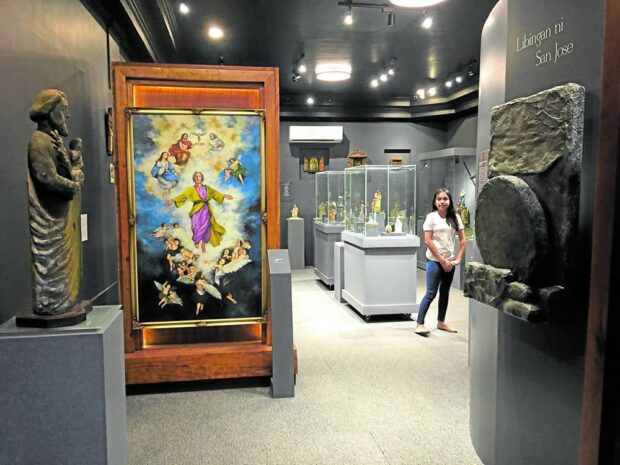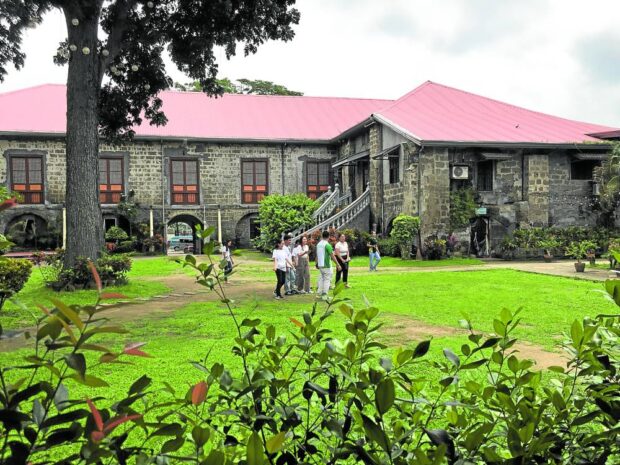
Sembrano
In 2021, despite the onslaught of the COVID-19 pandemic, the parish of San Jose in Batangas Province established the first systemic archives in the Archdiocese of Lipa, housing church records dating back to the 18th century.
Called the Archivo de San Jose de Malaquing Tubig and housed at the church convent, the facility was a product of multisectoral cooperation between the parish, through its Kasaysayan ng San Jose Project led by then parish priest Edwin Tolentino, advocates for historical preservation and benefactors.
Invaluable technical assistance was provided by the Archivo de la Universidad de Santo Tomas and the National Commission for Culture and the Arts.
The archives hold the nearly complete records of the church from its founding as a separate parish from Bauan in 1767, two years after it became an independent town.

It was then known as Malaquing Tubig, a name it got from the river of the same name that passes through the town. The name of its patron saint, San Jose, was later added to the town’s name.
Stored inside the archives are the church’s libros de bautismos (baptismal records), libros de casamientos (marriage records), libros de entierros (death records) and cargo y data (income and expenses).
Noted priests
In these are pages signed by noted priests who were assigned in town, including Fr. Joaquin Martinez de Zuniga, OSA (1760-1818), and Fr. Manuel Blanco, OSA (1779-1845), authors of two important books on Philippine history and natural heritage.
De Zuñiga wrote the “Historia de Las Islas Filipinas” which was published in Sampaloc, Manila, in 1803, while Blanco, a botanist, is famed for his “Flora de Filipinas,” first published in Manila in 1837.
It was Blanco who built the town’s present church in 1812. During his tenure as parish priest which lasted until 1816, he collected samples of local flora which became part of his book on Philippine botany.
Regalado Trota Jose, National Historical Commission of the Philippines (NHCP) chair, said the church’s archives are the first well-organized archives in the history of Batangas and “the best in the archdiocese.”
Jose did research on the church and its archives and recently presented his findings to San Jose church parishioners and authorities.

As part of its education, evangelization and heritage protection thrusts, apart from the archives, the church also opened in March this year the Museo de San Jose at the second level of the convent.
This museum features the life of Saint Joseph, Mary’s spouse and patron saint of workers and fathers.
It displays objects associated with the saint and his various images including two from the collection of the church from the 18th and 19th century.
Another museum
In December, the church is scheduled to open another museum located on the first level of the convent, beside the archives.

This parish museum will feature invaluable objects and artifacts from the collection of the church.
Current parish priest Servando Sentales, OSJ, said that these projects are done to bolster the sense of history of its residents, as these are symbols of their deep-rooted connection to the past.
The church is currently undergoing NHCP-approved restoration. The ceiling is being repaired by replacing termite-infested wooden trusses and the restoration of damaged ceiling paintings.
In a letter to the parish dated April 1, the NHCP informed church authorities that the “removal of the existing metal sheets and replacing them with a new material is not allowed and highly discouraged.”
It recommended a “surgical approach,” including the replacement of damaged parts, the cleaning and preservation of all artworks, and the reproduction of artworks that are already missing.
The commission further informed the parish that the “removal of cement plaster and exposing the stone wall is acceptable provided that the procedure adheres to the NHCP’s guidelines in stone conservation and other accepted international standards.”
Ceiling paintings

The church has impressive interior paintings including on its ceiling, which features a repeated pattern of floral motifs with cherub heads and central texts at section dividers.
Tacloban native Jose Ma. Antonio Valdueza (1929-2016) painted the church’s interior sometime in the late 1960s to early 1970s.
Aside from the church of San Jose, Valdueza also did the interior paintings of the Inmaculada Concepcion Basilica in neighboring Batangas City, San Sebastian Cathedral in Lipa City, Inmaculada Concepcion Church in Bauan and the Basilica of San Martin de Tours in Taal.
Elsewhere in the country, his projects include the Baclayon Church in Bohol and the San Agustin Church in Intramuros.
The Augustinians were the first to minister to the town of San Jose from its foundation in the 18th century with its first church of “lime and pebbles” built around 1788 by Fr. Tomas Cañon.
From 1812 to about 1816, this was replaced by a bigger one of adobe with a cogon roof by Fr. Blanco.
The blocks of adobe used in the construction were quarried from the riverbanks of Malaquing Tubig, located adjacent to the church complex.
At a section of the river bank, the Augustinian priests also built the still extant friar’s bath, also from adobe.
The cogon roof burned down in 1847 and was subsequently repaired, together with other works, by Fr. Roman Sanchez, OSA, parish priest from 1857 to 1864.
Fr. Sanchez also built the belfry and a solid stone bridge that spanned the Malaquing Tubig river.
Fr. Vicente Maril, OSA, installed the galvanized iron roofing during his term as parish priest from 1885-1886 while Fr. Victorino Perez, parish priest from 1890 to 1896, restored the convent and finished works at the transept including the dome.
Following the Philippine Revolution against Spain and independence in 1898, the administration of the church was transferred to the secular clergy, then Capuchin, and from 1915 to the present, the Oblates of Saint Joseph. —CONTRIBUTED












































